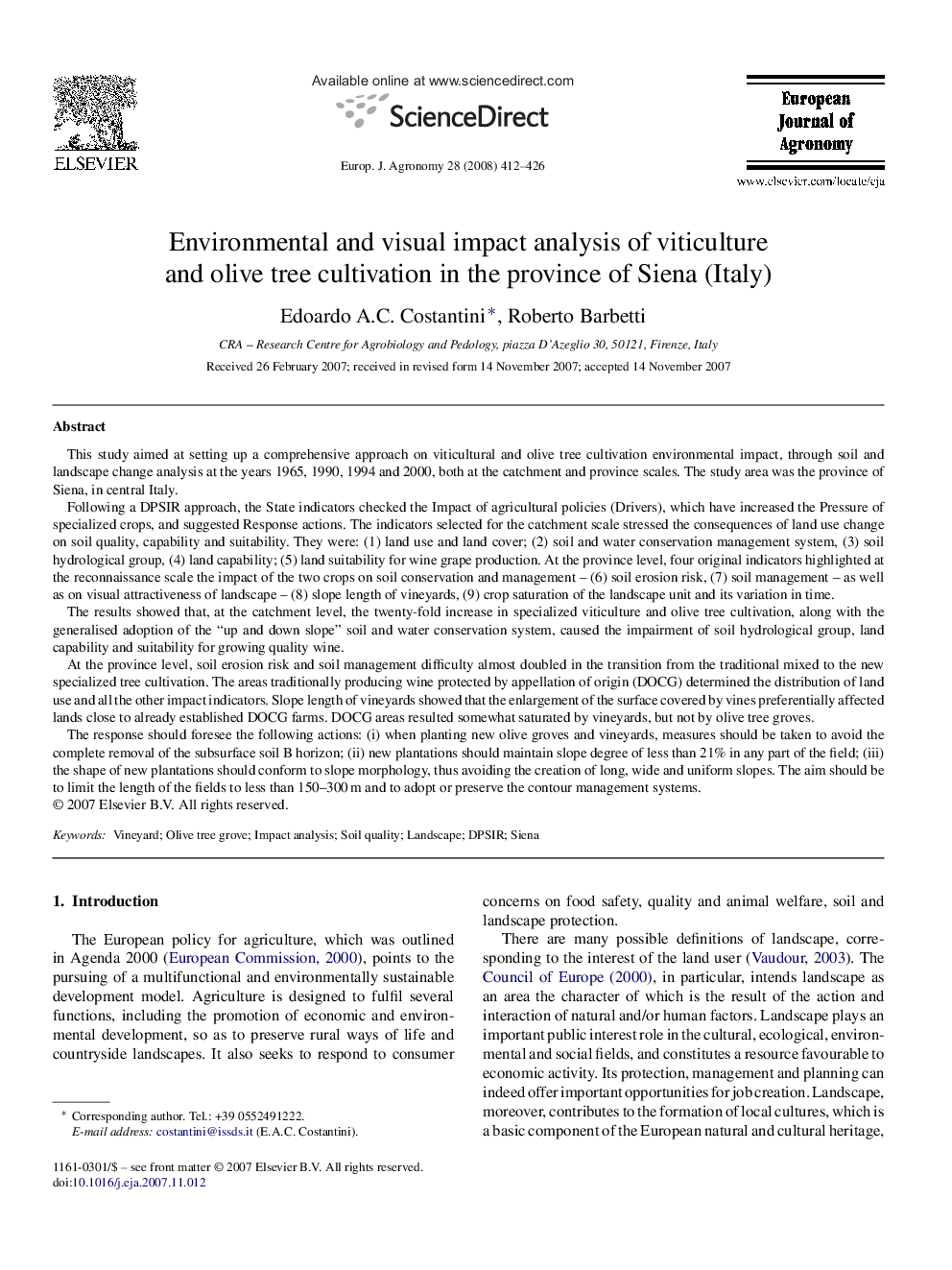| کد مقاله | کد نشریه | سال انتشار | مقاله انگلیسی | نسخه تمام متن |
|---|---|---|---|---|
| 4509474 | 1624519 | 2008 | 15 صفحه PDF | دانلود رایگان |

This study aimed at setting up a comprehensive approach on viticultural and olive tree cultivation environmental impact, through soil and landscape change analysis at the years 1965, 1990, 1994 and 2000, both at the catchment and province scales. The study area was the province of Siena, in central Italy.Following a DPSIR approach, the State indicators checked the Impact of agricultural policies (Drivers), which have increased the Pressure of specialized crops, and suggested Response actions. The indicators selected for the catchment scale stressed the consequences of land use change on soil quality, capability and suitability. They were: (1) land use and land cover; (2) soil and water conservation management system, (3) soil hydrological group, (4) land capability; (5) land suitability for wine grape production. At the province level, four original indicators highlighted at the reconnaissance scale the impact of the two crops on soil conservation and management – (6) soil erosion risk, (7) soil management – as well as on visual attractiveness of landscape – (8) slope length of vineyards, (9) crop saturation of the landscape unit and its variation in time.The results showed that, at the catchment level, the twenty-fold increase in specialized viticulture and olive tree cultivation, along with the generalised adoption of the “up and down slope” soil and water conservation system, caused the impairment of soil hydrological group, land capability and suitability for growing quality wine.At the province level, soil erosion risk and soil management difficulty almost doubled in the transition from the traditional mixed to the new specialized tree cultivation. The areas traditionally producing wine protected by appellation of origin (DOCG) determined the distribution of land use and all the other impact indicators. Slope length of vineyards showed that the enlargement of the surface covered by vines preferentially affected lands close to already established DOCG farms. DOCG areas resulted somewhat saturated by vineyards, but not by olive tree groves.The response should foresee the following actions: (i) when planting new olive groves and vineyards, measures should be taken to avoid the complete removal of the subsurface soil B horizon; (ii) new plantations should maintain slope degree of less than 21% in any part of the field; (iii) the shape of new plantations should conform to slope morphology, thus avoiding the creation of long, wide and uniform slopes. The aim should be to limit the length of the fields to less than 150–300 m and to adopt or preserve the contour management systems.
Journal: European Journal of Agronomy - Volume 28, Issue 3, April 2008, Pages 412–426